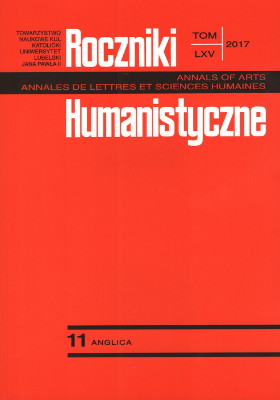Seeing with a Filmmaker’s Eyes: Glimpses of Mobilized Landscapes in Stan Brakhage’s The Wonder Ring (1955) and Visions in Meditation #2: Mesa Verde (1989)
Seeing with a Filmmaker’s Eyes: Glimpses of Mobilized Landscapes in Stan Brakhage’s The Wonder Ring (1955) and Visions in Meditation #2: Mesa Verde (1989)
Author(s): Kornelia BoczkowskaSubject(s): Language and Literature Studies, Studies of Literature, Other Language Literature
Published by: Towarzystwo Naukowe KUL & Katolicki Uniwersytet Lubelski Jana Pawła II
Keywords: American avant-garde and experimental film; Stan Brakhage; American landscape; phantom ride; city symphony; road movie
Summary/Abstract: In this paper I present various ways in which Stan Brakhage’s The Wonder Ring (1955) and Visions in Meditation #2: Mesa Verde (1989) tend to challenge the concept of American landscape by means of cinematic conventions traditionally associated with phantom rides, city symphonies and contemporary road movies. It seems that Brakhage’s works do not only employ non-standard editing, camera movement and extended shot to reproduce a continuous flow of motion, but they also exploit the dynamics between the spectactor’s “mobilized virtual gaze” (Friedberg, Window 2) and passing views by evoking a distorted experience of sensational and meditative voyages, hence questioning panoramic perception and an idealized image of American (film) landscape intrinsically bound with the natural and technological sublime. Particularly, both films draw on rapid handheld camerawork, superimpositions, anamorphic lens, bright or dim exposures, fades, odd angles, softened focus and other techniques to defamiliarize and objectify the protagonist’s journey and thus document Brakhage’s perception and extra-objective reality.
Journal: Roczniki Humanistyczne
- Issue Year: 65/2017
- Issue No: 11
- Page Range: 75-89
- Page Count: 15
- Language: English

